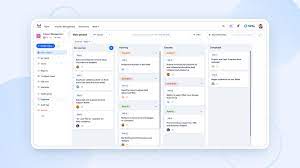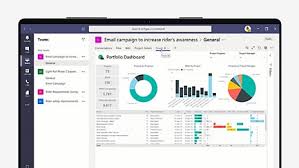Unlocking Success: The Power of Effective Management Systems
The Importance of Management Systems
Management systems play a crucial role in the success and efficiency of organisations across various industries. These systems are designed to streamline processes, improve communication, and enhance decision-making at all levels of an organisation. Whether it’s a quality management system, an environmental management system, or an information security management system, the implementation of such systems can bring numerous benefits to an organisation.
Enhanced Efficiency
One of the key advantages of management systems is the improvement in efficiency they bring. By establishing clear processes and procedures, organisations can reduce waste, eliminate redundant tasks, and optimise resource allocation. This leads to increased productivity and cost savings in the long run.
Improved Communication
Effective communication is essential for the smooth operation of any organisation. Management systems help facilitate communication by providing a structured framework for sharing information, setting goals, and monitoring progress. This ensures that everyone within the organisation is on the same page and working towards common objectives.
Better Decision-Making
Management systems also contribute to better decision-making by providing data-driven insights and performance metrics. With real-time information at their fingertips, managers can make informed decisions quickly and effectively. This proactive approach to decision-making can help organisations stay ahead of competitors and adapt to changing market conditions.
Compliance and Risk Management
In today’s regulatory environment, compliance with industry standards and regulations is non-negotiable. Management systems help organisations ensure compliance by establishing clear guidelines and protocols for operations. Additionally, these systems aid in identifying potential risks and implementing preventive measures to mitigate them effectively.
Continuous Improvement
A fundamental aspect of management systems is their focus on continuous improvement. By regularly reviewing processes, identifying areas for enhancement, and implementing corrective actions, organisations can strive for excellence and adapt to evolving business landscapes. This commitment to continuous improvement fosters innovation and drives sustainable growth.
In conclusion, management systems are indispensable tools for modern organisations seeking operational excellence and competitive advantage. By embracing these systems and integrating them into their culture, organisations can unlock new opportunities for growth, efficiency, and success.
Top 5 Tips for Optimising Your Management System
- Clearly define roles and responsibilities within the management system.
- Establish efficient communication channels to ensure smooth flow of information.
- Regularly review and update processes to adapt to changing circumstances.
- Provide adequate training and support for employees to ensure successful implementation of the system.
- Monitor key performance indicators to track progress and identify areas for improvement.
Clearly define roles and responsibilities within the management system.
In any effective management system, a crucial tip is to clearly define roles and responsibilities for all individuals involved. By establishing clear expectations and delineating specific duties, organisations can enhance accountability, streamline decision-making processes, and promote efficient teamwork. When roles are well-defined, employees have a better understanding of their contributions to the overall objectives of the organisation, leading to improved productivity and smoother operations. Clarity in roles and responsibilities fosters a sense of ownership and empowerment among team members, ultimately contributing to the success of the management system as a whole.
Establish efficient communication channels to ensure smooth flow of information.
Establishing efficient communication channels is paramount in ensuring a smooth flow of information within an organisation. By implementing clear and effective communication pathways, organisations can facilitate the exchange of ideas, feedback, and updates in a timely manner. This not only enhances collaboration among team members but also promotes transparency and alignment towards common goals. Efficient communication channels help to avoid misunderstandings, reduce delays, and foster a cohesive work environment where information is shared seamlessly across all levels of the organisation.
Regularly review and update processes to adapt to changing circumstances.
It is essential for organisations to regularly review and update their processes to effectively adapt to changing circumstances. By conducting periodic evaluations of existing procedures and workflows, organisations can identify inefficiencies, anticipate challenges, and implement necessary adjustments to remain agile and responsive in a dynamic business environment. This proactive approach ensures that management systems evolve in line with evolving needs and industry trends, enabling organisations to maintain a competitive edge and drive continuous improvement across all facets of their operations.
Provide adequate training and support for employees to ensure successful implementation of the system.
To ensure the successful implementation of a management system, it is crucial to provide adequate training and support for employees. By investing in comprehensive training programmes and ongoing support mechanisms, organisations can empower their staff to effectively utilise the system, understand its benefits, and adhere to best practices. This approach not only enhances employee confidence and proficiency but also fosters a culture of continuous learning and improvement within the organisation. Ultimately, well-trained employees play a pivotal role in maximising the efficiency, effectiveness, and overall success of a management system implementation.
Monitor key performance indicators to track progress and identify areas for improvement.
Monitoring key performance indicators (KPIs) is essential in the effective implementation of management systems. By tracking KPIs, organisations can measure their progress towards goals, identify trends, and pinpoint areas that require attention or improvement. These indicators provide valuable insights into the health of the organisation and help decision-makers make informed choices to drive success. Regularly monitoring KPIs ensures that organisations stay on track, adapt to changing circumstances, and continuously strive for excellence in their operations.






